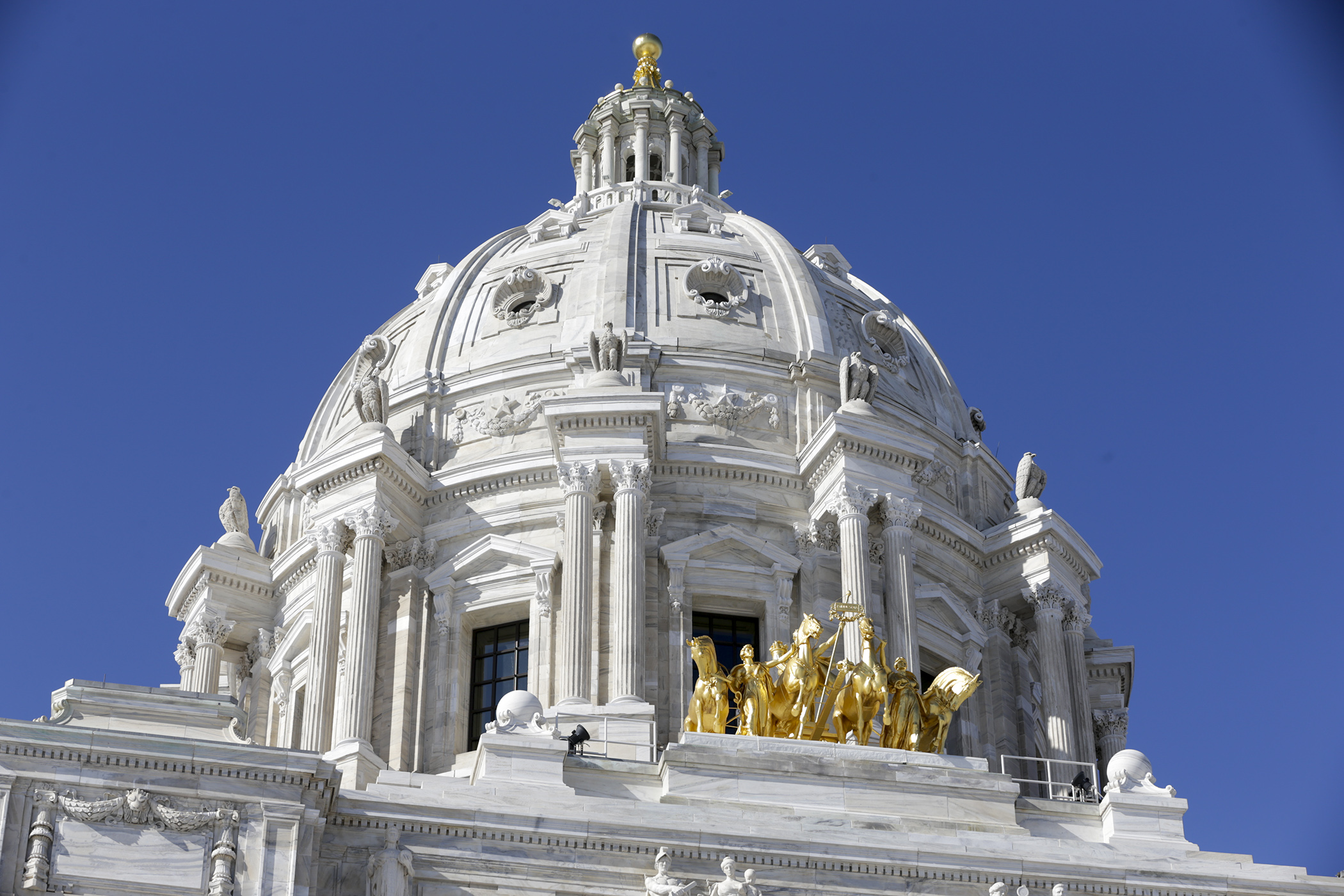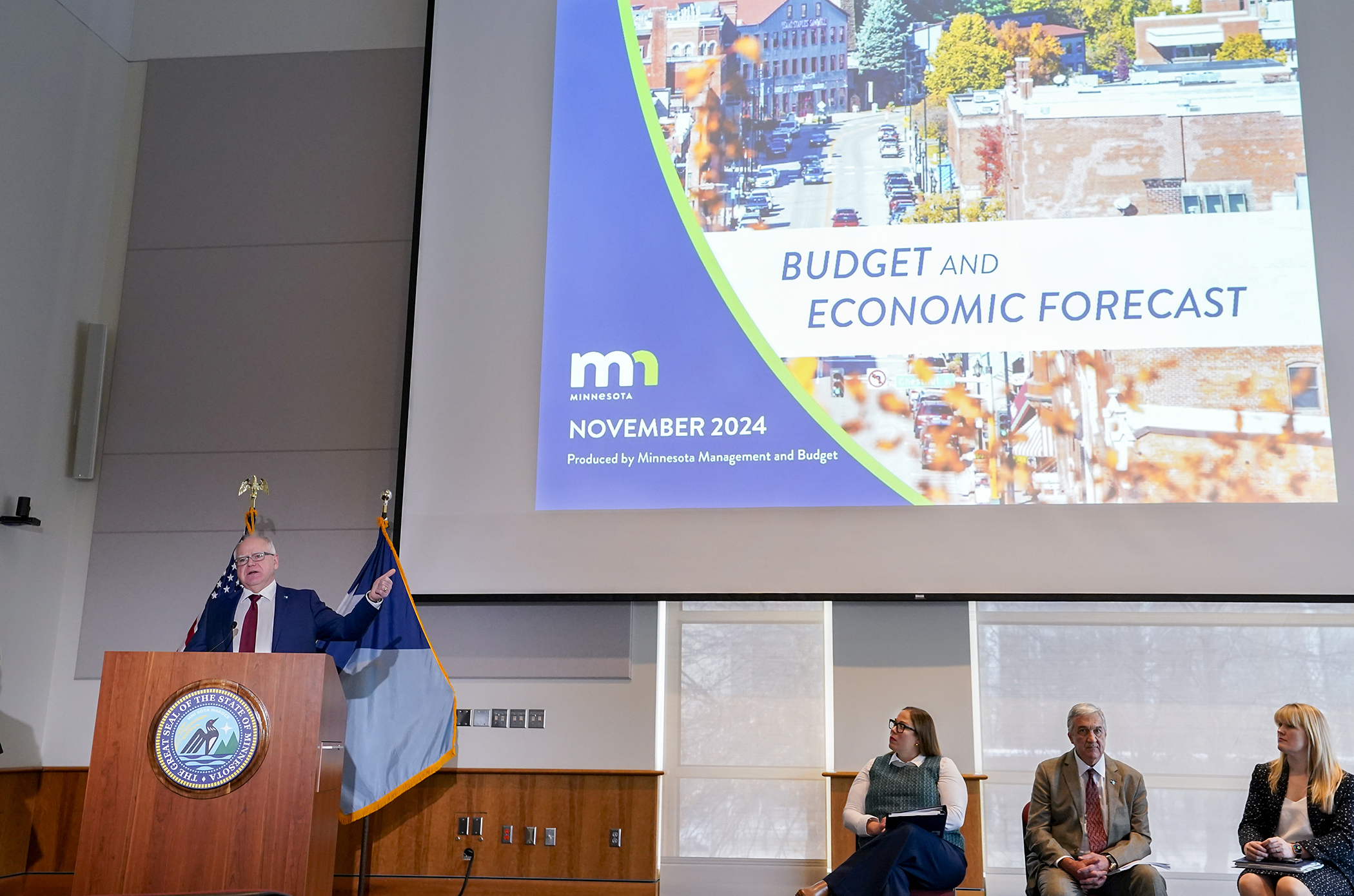Minnesota without loons? House committee addresses state of the state’s climate
Now that our state seal features an image of a loon, Heidi Roop has some bad news for you.
“It looks all but certain that Minnesota will lose its iconic loons in summer by the end of the century,” she told the House Climate and Energy Finance and Policy Committee Tuesday.
Roop is the director of the University of Minnesota Climate Adaptation Partnership and an assistant professor of climate science at the university. Since late last decade, she’s been annually reporting to the committee on the state of the state’s climate.
“The risks and impacts are increasing across the state,” Roop said. “With every passing day, the abstractions of climate change lessen, and we are left confronting the risks scientists have long anticipated.”
The Climate Adaptation Partnership’s latest data confirms that Minnesota is getting warmer and wetter. The state’s average annual temperature has increased by 2.9 degrees Fahrenheit since 1895, with the largest increases in the northern third of the state. (For example, winter low temperatures are 7.1 degrees higher there than in 1895.)
Roop said the state’s 10 warmest and wettest years on record have all occurred since 1997, and there’s been a 13% increase in the heaviest rainfall of the year. Since 1950, the state’s growing season has lengthened by about two weeks.
She said the worst-case scenario – if greenhouse gas emissions continue at a very high level – would see the state’s springs being 15% wetter by mid-century and 40% wetter by the end of the century. But summers would be considerably drier.
As for the warmth, without a considerable drop in emissions, by mid-century, the state is projected to see up to 12 more days with temperatures over 100 degrees Fahrenheit each year and up to 40 such days each year by the end of the century.
But Roop said the effects won’t be as severe if greenhouse gas emissions are reduced, and if policies are adopted that are a mix of mitigation and adaptation. Examples of mitigation are sequestering and storing carbon, reducing building energy use, reducing municipal water use and facilitating active mobility.
Rep. Robert Bierman (DFL-Apple Valley) said the House Commerce Finance and Policy Committee had been told that – of a record 28 billion-dollar disasters that occurred in the U.S. in 2023 -- five were in Minnesota. He asked if there was a chance that projected changes could arrive even faster. Roop replied that scientists have underestimated the pace of change before, citing increased heat in the Pacific Northwest.
The hearing also featured a report on Minnesota’s greenhouse gas emissions from Frank Kohlasch, the Pollution Control Agency’s assistant commissioner for air and climate policy. He said that while Minnesota’s emissions fell by 23% from 2005 to 2020 they would need to be reduced by 35% from 2020 levels to meet the state’s 2030 emissions target.
Rep. Pat Garofalo (R-Farmington) questioned whether Minnesota reducing its carbon emissions would have any effect on climate change.
“How can a state of five-and-a-half million people make a difference in the emissions profile of a planet of 8 billion people?” he asked.
“If we do nothing, then we go nowhere,” said Rep. Patty Acomb (DFL-Minnetonka), the committee chair. “Maybe it’s a drop in the bucket, but, if we sit back and do nothing, we know what will happen.”
Related Articles
Search Session Daily
Advanced Search OptionsPriority Dailies
Ways and Means Committee OKs House budget resolution
By Mike Cook Total net General Fund expenditures in the 2026-27 biennium will not exceed a hair less than $66.62 billion.
That is the budget resolution approved Tuesday by the House Ways...
Total net General Fund expenditures in the 2026-27 biennium will not exceed a hair less than $66.62 billion.
That is the budget resolution approved Tuesday by the House Ways...
Minnesota's budget outlook worsens in both near, long term
By Rob Hubbard It looks as if those calling for less state spending could get their wish, judging from Thursday’s release of the February 2025 Budget and Economic Forecast.
A state su...
It looks as if those calling for less state spending could get their wish, judging from Thursday’s release of the February 2025 Budget and Economic Forecast.
A state su...